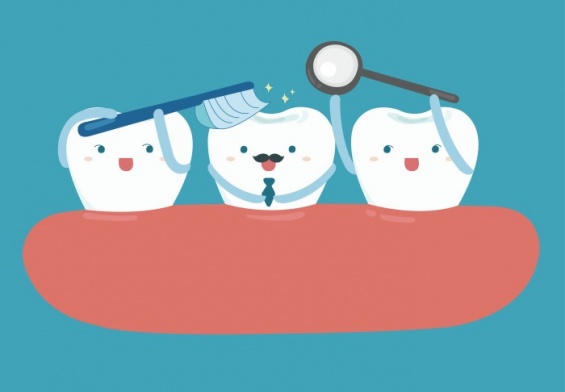Tongue thrust, while often unnoticed, is a condition that can have far-reaching consequences on an individual’s oral health and speech development. Characterized by an abnormal swallowing pattern where the tongue pushes against or between the teeth, tongue thrust not only affects the way a person eats and speaks but can also have long-term effects on dental alignment and oral functionality. Common in children, but also present in adults, understanding what tongue thrust is and how to effectively manage it is crucial for mitigating its impact.
This comprehensive guide delves into the nuances of tongue thrust, exploring its signs, symptoms, and the mechanisms behind this condition. We will discuss the various treatment options available, including orofacial myofunctional therapy, swallowing therapy, and the role of tongue exercises in correcting this disorder. Whether you are a parent concerned about your child’s oral development or an adult experiencing difficulties, this article aims to provide valuable insights into recognizing, treating, and managing tongue thrust for optimal oral health and functionality.
What is Tongue Thrust?
Tongue thrust, scientifically known as orofacial myofunctional disorder, is a condition characterized by an atypical swallowing pattern. In a normal swallow, the tongue presses against the roof of the mouth, facilitating the movement of food to the back of the throat. However, in tongue thrust, the tongue tends to push forward against the front teeth or protrude between them during swallowing, speaking, and sometimes when at rest.
This condition is often a habit that starts in childhood but can continue into adulthood if not corrected. While it can be a natural developmental phase in infants and young children, persistence beyond the age of four or five is usually cause for concern. Tongue thrust can be a result of various factors, including prolonged use of bottles and pacifiers, thumb sucking, allergies, and anatomical anomalies like tongue tie.
Signs and Symptoms of Tongue Thrust
Identifying tongue thrust involves observing certain signs and symptoms, which can vary between individuals. Common indicators include:
- Improper Swallowing: Visible movement of the tongue forward or sideways during swallowing.
- Speech Impediments: Difficulty pronouncing certain sounds, especially “s,” “z,” “th,” “n,” and “l.”
- Dental Issues: Misalignment of teeth, particularly an open bite, where the front teeth don’t touch when the mouth is closed.
- Facial Structure Changes: Prolonged tongue thrusting can affect the development of facial structures, potentially leading to a longer, narrower face and mouth.
- Mouth Breathing: Habitual breathing through the mouth instead of the nose, even in the absence of nasal congestion.
The Impact of Tongue Thrust on Oral Health and Development
The long-term impact of tongue thrust on oral health and development can be significant. Constant pressure from the tongue against the teeth can lead to dental misalignments, necessitating orthodontic treatments such as braces. In severe cases, it can also alter the shape of the jaw and facial structure, affecting both appearance and function.
In terms of speech development, tongue thrust can impede the correct articulation of certain phonemes, leading to speech impediments. This can impact communication skills and, in children, may affect social interactions and confidence.
Additionally, untreated tongue thrust can contribute to or exacerbate existing myofunctional disorders. These disorders can lead to difficulties with chewing, swallowing, and even lead to sleep apnea, highlighting the importance of addressing tongue thrust as part of a comprehensive approach to oral health.
Treatment Options for Tongue Thrust
Treating tongue thrust involves a multidisciplinary approach that may include orofacial myofunctional therapy, speech therapy, orthodontic treatment, and in some cases, surgery. The choice of treatment depends on the individual’s age, the severity of the condition, and any associated complications.
- Orofacial Myofunctional Therapy: This therapy focuses on retraining the muscles of the mouth and face to promote correct tongue posture and swallowing patterns.
- Speech Therapy: Speech therapists work to correct speech impediments resulting from tongue thrust, employing various exercises and strategies to improve articulation.
- Orthodontic Treatment: In cases where tongue thrust has led to dental misalignments, orthodontic interventions like braces may be necessary.
- Surgical Intervention: In rare cases, particularly where a tongue tie is present, surgical intervention may be required to release the tongue and allow for proper movement.
Orofacial Myofunctional Therapy in Detail
Orofacial myofunctional therapy is a key component in treating tongue thrust. It involves exercises that target the muscles used in swallowing and resting tongue posture. The therapy aims to:
- Train the tongue to rest at the roof of the mouth.
- Establish a correct swallow pattern.
- Improve overall muscle tone in the face and neck.
This therapy is typically conducted by trained orofacial myologists or speech-language pathologists. It requires active participation and regular practice, often including exercises to be done at home. The duration of therapy varies but can last several months to achieve lasting changes.
Preventing and Managing Tongue Thrust in Children
Early intervention is critical in preventing the long-term effects of tongue thrust in children. Parents and caregivers can play an essential role in this regard:
- Monitor Oral Habits: Discourage prolonged use of pacifiers or thumb sucking, which can contribute to the development of tongue thrust.
- Encourage Proper Swallowing Techniques: Teach children to swallow with their tongue placed against the roof of their mouth.
- Regular Dental Check-Ups: Routine visits to the dentist can help identify early signs of tongue thrust.
- Seek Professional Help: If signs of tongue thrust are evident, consult a speech therapist or orthodontist for evaluation and potential treatment.
By recognizing the signs early and taking proactive steps, the development and impact of tongue thrust in children can be significantly mitigated.
Conclusion: Embracing a Holistic Approach to Tongue Thrust Treatment
Understanding and addressing tongue thrust is pivotal for ensuring healthy oral development and function. This condition, while often overlooked, can have lasting impacts on dental alignment, speech, and overall oral health. Effective treatment and management of tongue thrust require a holistic and multi-faceted approach, incorporating orofacial myofunctional therapy, speech therapy, orthodontics, and sometimes surgical interventions.
The journey to correct tongue thrust demands patience, persistence, and a commitment to prescribed exercises and therapy routines. For children, early detection and intervention are key to preventing more severe complications later in life. Parents play an instrumental role in this, from monitoring and discouraging harmful oral habits to seeking professional evaluations when necessary.
Remember, each case of tongue thrust is unique, and so are the paths to correction and management. Collaborating with healthcare professionals specializing in orofacial myology, speech-language pathology, and orthodontics will provide the best course of action tailored to individual needs.
In conclusion, by understanding the nuances of tongue thrust and embracing the available treatment options, individuals can overcome the challenges it presents. This proactive approach not only improves oral health and function but also enhances overall quality of life, ensuring a future with a healthy, functional, and confident smile.




